Frigate Bird Colony

Beez Neez now Chy Whella
Big Bear and Pepe Millard
Fri 15 May 2009 22:54
|
The Frigate Bird Colony of
Barbuda
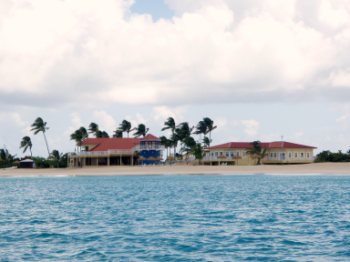   We pulled the dinghy up the beach and
walked along the fine pinkish sand to the Lighthouse Bay
Hotel. The lady on duty called Foster on the radio to
collect us from the lagoon behind the hotel for our trip to Codrington via the
frigate bird colony. The view through the foyer is
one of those glossy magazine shots you look at and wonder if it's real or not -
this one certainly is. The back of the hotel or
lagoon side showing the nine bedrooms - currently empty - but a wedding party is
due in in a couple of days.
   The hotel jetty,
Codrington is the far side and Bear waiting
quietly for Foster to arrive. To the back of Bear is a row of about
fifteen feet of protective shrubs - planted as a hurricane defense and wind
break. The wind is such that the lagoon is whipped up and clods of foam blow up
the sand. If our dinghy and engine were not so heavy we could pull it over the
sandy beach, through a gap in the bushes and down to where is standing, we may
try it in two trips?? Maybe.
   The colony
stretches for miles and is the biggest in the Caribbean with over five thousand
birds. The frigate bird can be traced back over 50 million years, making them
the oldest surviving avian species. The frigates being the most aerial of water
birds have the largest wingspan of four to five feet in length in proportion to
its body size of any bird in the world. These birds cannot walk or swim; they
soar high in the clouds and live solely on fish. They have been seen catching
flying fish scared out of the water by dolphins, stealing from pelicans,
cormorants or egrets and storming terns until they drop their catch. One of
the tour guides here has actually seen one of the birds fall into the water and
two dropping down and scooping it - one each side - in rescue. The males
fly in to the colony in November and sit in the bushes showing off their red
pouch, (Bear says we will have to come next year to see this amazing sight),
they gather a few sticks and call it a nest waiting for a female to judge him
attractive. After the single egg is laid the father takes his turn at sitting on
the nest but after hatching dad leaves for Mexico - Foster told us that it was
to visit their mistresses. The line of
buoys is as close as you can get if the nests hold an egg, but at this
time of year Foster said it was OK to get us closer, he switched off his
powerful engine and paddled us in.
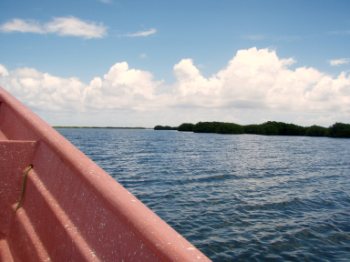   Foster has been showing tourists
around the lagoon for forty five years and knows the area, where to zig-zag at
speed like the expert he clearly is. Tourists are not allowed to visit the
colony alone, Foster proved to be very knowledgeable about the birds. From a
distance you can see hundreds circling, as you get closer you think the bushes
have bald bits or covered in some sort of fruit until you get close in and see
all the heads of the chicks. The colony has been featured in the National
Geographic.
 Each and every bush had hundreds of
birds in close proximity
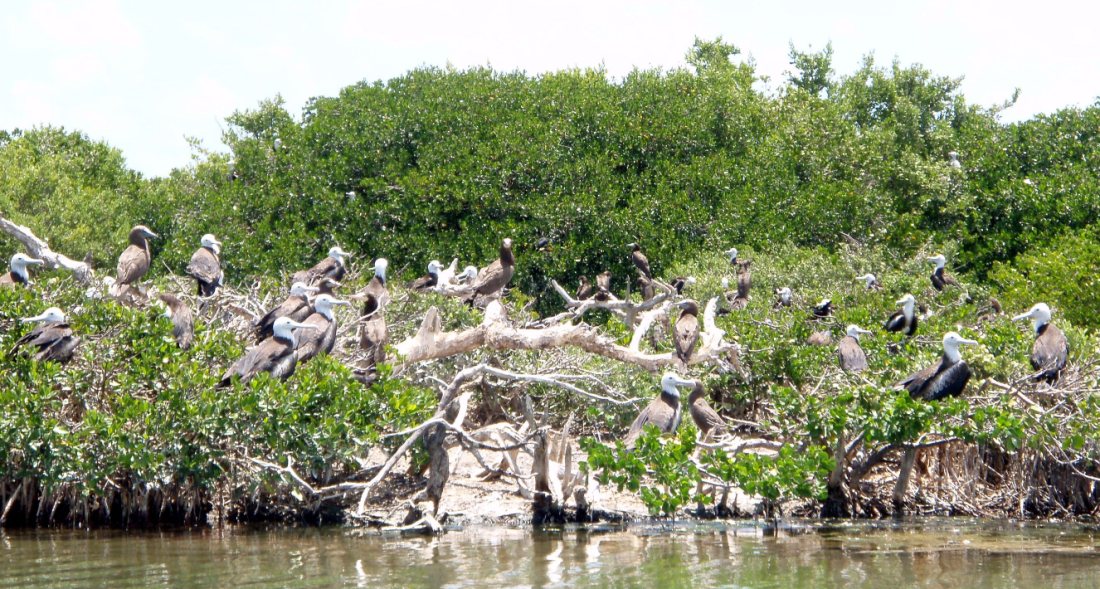 These are all
babies. The big ones are last years and will be ready to fly in time to
leave before the hurricane season begins.
 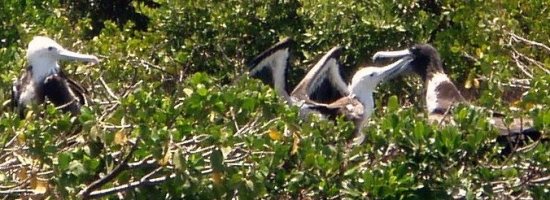 A special moment happened when mum
landed - with baby clacking her bill - she fed her
youngster. Mums do all the chick rearing.
 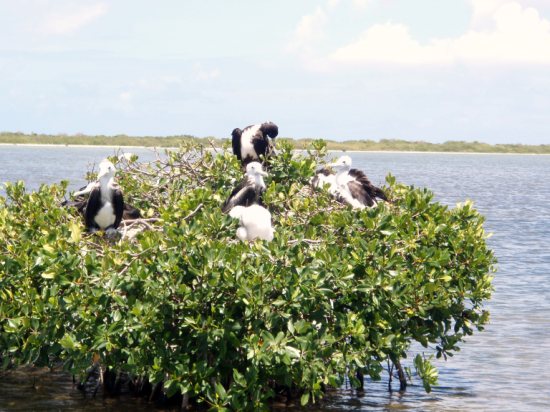 The tiny white
ball of fluff is the youngest and last of this years chicks, he was too
interested in preening to let me take his picture.
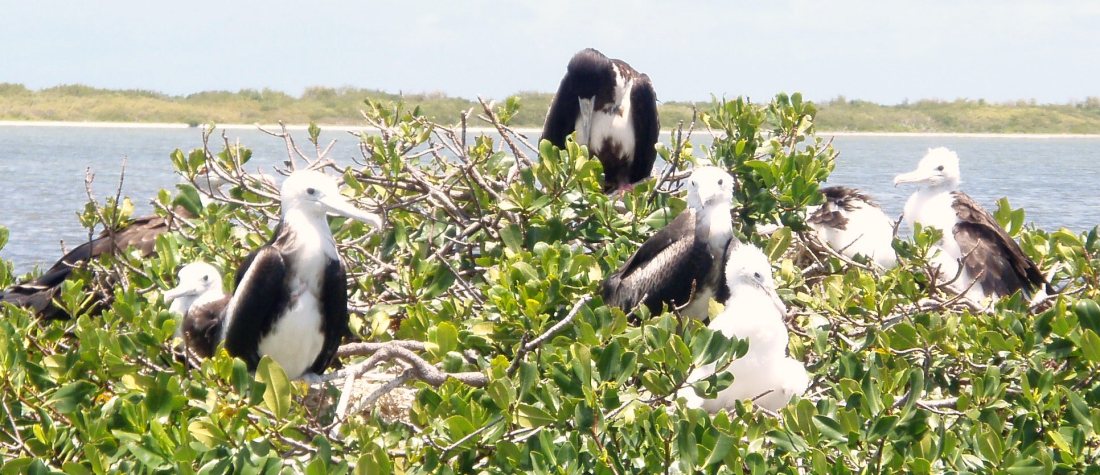 "OK I'll look up just for a
second"
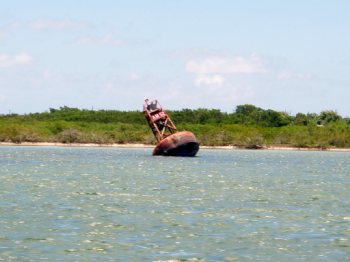   AM52 is a
red buoy that broke loose from its mooring on the Saint Lawrence River in Canada
and silently made its way here to the back of the lagoon. A
sad looking catamaran damaged in a storm. Our first sight of Codrington. When we stepped ashore we had to go into the
Environment Office to pay our 2 US Dollars for going to see the birds. Then
we stopped in the Tourist Office where the ladies allowed us to check our emails
and gave us a map and a booklet on Barbuda. Off we went to explore.
ALL IN ALL THE GREAT FRIGATE
BIRD COLONY WAS TRULY AN UNFORGETTABLE
SIGHT.
|